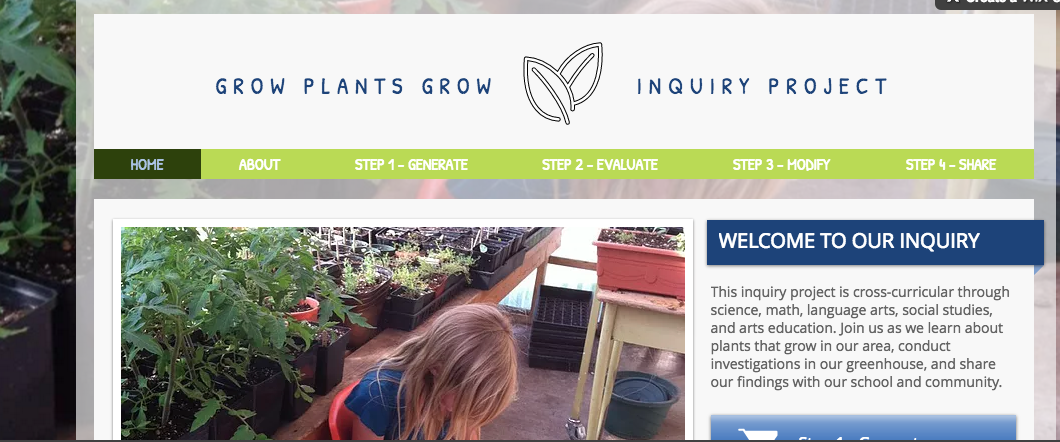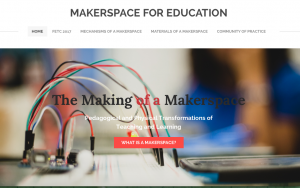Reflections on Module A: Lesson 3
Interviews / Why educators are frustrated by incorporating technology into their classrooms
One of the overarching themes that emerged from the interviews in Lesson #3 was how frustrated educators are by the lack of training and equipment that are available to them in order to properly implement technology in the classroom.
Most teachers either teach themselves technology because they are interested in it and see it as beneficial to the students in their classrooms or see a teacher using technology and ask for assistance learning it. As was mentioned in the Strawberry Hill School video’s the new teacher had been helped by her teaching partner to implement technology but the new teacher felt she was imposing on the veteran teachers time. It was not the veteran teacher’s job to teach her (the new teacher) technology.
The teacher’s who do implement technology on their own often become overwhelmed by the requests of others to introduce them to new devices and software. This mentorship position while rewarding is often taxing on the mentor as they receive no time or remuneration for the extra job they are performing.
Another easily recognized problem mentioned in a number of the interviews was the lack of devices, the cumbersome problem of signing out and returning tech devices as well as the constant frustration of poor bandwidth issues. Teachers agreed that having technology in their rooms would be very beneficial so that devices can be used for those “teachable moments”. Having to sign out equipment and return it at a specific time does not allow for lessons to flow organically. Many teachers have given up on trying to use technology because of device issues (devices not charged, not working) or the inability to get all students on the network at the same time. Most teachers felt too much time was wasted in trouble shooting technology glitches.
The following are excerpts from the interview posts highlight the views of teachers across Canada:
- Mr. A also acknowledged frequently the difficulty of getting teachers the training they need to successfully integrate technology into their math and science classrooms. He noted that “You can ask for an expert to come out and help you with these things but it’s really hard because of all schools across the school division and only a couple of experts to come and help you. You’ve got to book the pretty far in advance.”. He identified that most of the effective technology learning happening in his context was a result of informal learning from colleagues. This seemed to be both a convenience for teachers and a necessity born of limited training staff as supported by his comment “If a teacher knows how to do something, we would go to that teacher because lots of times with the district it’s hard for them to come out and teach you…”.
Posted in A. Interview on January 19, 2017 by daniel bosse.
2. Most uses of technology were used mainly for her teaching. Students had no interaction with the technologies. Second, the differential experience with technology her and her teacher education classmates had regarding Smart Boards. She did not feel that her teacher program prepared her for integrating technology but she also felt that her classmates “definitely felt differential in terms of technology coming out of the program.” Another aspect I found interesting was her limitations regarding integrating technology. From the start, she noted how her teaching partner does not use technology, which seems to have some influence on her as she says that “her teacher partner does not want to use technology with kindergarten students” and therefore she is “not currently using technology” in the classroom. Other limitations she mentions include the unreliability of technology based on its durability and wifi connectivity issues. Furthermore, she goes into detail about the inconvenience of the sharing aspect of technology. She says, “some schools have computer labs, which are shared between all classroom classes and resource classes. There are sometimes iPad cards that hold about 20 iPads, but again, shared between all classes. On top of that, teachers have to physically go somewhere else in the school to sign those out, sometimes finding out that the time they wanted use the iPads is already booked.” Though my interviewee currently does not use technology in teaching the math and sciences, she has shared her perspective about the limitations behind its use.
Posted in A. Interview on January 20, 2017 by Gloria Ma
3. One of the overarching themes that came through in the discussion was the lack of training to integrate technology into the classroom, whether it was for new teachers in teacher’s college or established teachers attempting to use it in the classroom. Both teachers felt that there was a big push for teachers to use different types of technology in the classroom, but that there was no real training to back up the initiative. Any knowledge or skills acquired were usually done on the initiative of the teacher themselves or it was a one-off PD session with no follow-up or time to practice. TM noted that “any pursuit of professional development must be on your own time, you must seek it out on your own” and TC echoed that with “it is not available in the school and we are not given enough time to practice and apply our new knowledge.” I added that any real knowledge or understanding of the technology that I use in my classroom has come from my own initiative, finding courses online, or seeking out courses offered through the Board of Ed or my union. All of us agreed that if there were better training and time given to practice and apply the knowledge, there would be a greater integration of technology into all the subjects at a higher order level than just using them for typing or research. It was also felt that this would give more established teachers a higher comfort level using technology as it does not come naturally to us, it is not our culture so there is a higher learning curve for many of us.
The major hurdle or challenge for these teachers was accessibility, of the devices and of training or assistance. Devices in the school have to be signed out through the library and are often not available when it is an optimum time for them to be used. TM explained that there are no teachable moments when we can just turn and use the technology in a seamless way as they would have needed to be signed out a week in advance, and I don’t have ESP to be able to know exactly when something like that will occur in the class.” It is difficult to know where you will be in your pacing of subjects to be able to determine when it will be the best time to sign them out. It is impossible to use them in the way they should be integrated as they are used in real life applications. TC added that when the devices freeze or crash there is a lot of lost time trying to fix it, or reboot it, and we lose the class’ attention while they wait. Often it is something we can’t fix and it takes days or weeks before someone from the board will take care of it.” , essentially making the technology inaccessible to the classroom while we are waiting for it to be functional.
Posted in A. Interview, Uncategorized on January 21, 2017 by wincherella
4. Highlight #1:The Disconnect Between Teaching Training and Actual Practice
As Teacher K is a recent university graduate, I was interested to see her perspective on the connection or disconnection between the education she received and her own classroom practice. While in her experience the importance of and theory behind technology use was emphasized, even basic examples of programs and apps were not readily offered by instructors. As a result, unguided exploration was the primary option for finding ways to integrate technology into teaching practice. Conversely, her current school division and colleagues offer many resources for tools and implementation options, including time with mentors. As I am Teacher K’s mentor, it has been rewarding to see her growth over time in the area of technology. Despite the theoretical–practical disconnect between her university training and practice, Teacher K has been able to find ways to meaningfully use technology tools in her classroom. “In science, technology allows students to see videos of situations we are unable to see in real life. For example, when studying ecosystems, we are unable to visit a desert. By using technology, students are able to see pictures and videos of the interactions that happen in different biomes all over the world.”
Posted in A. Interview on January 23, 2017 by STEPHANIE IVES.
5. As a distance learning teacher, Teacher L faces some issues of isolation. Throughout the interview there is little indication of collaboration efforts with colleagues or professional development in the area of technology. When asked how she has learned to incorporate referenced types of technology into her learning space, she admits that it is largely “through trial and error” and that “you just need to jump in”. When prodded to share if colleagues have been a useful resource in helping learn new technologies, she seemed unsure and responded with “I guess” and then mentioned that she has “emailed the Zoom people to see how to make things work” when initially setting up a Zoom conference room for her students. Although Teacher L does not seem to have much collaboration with other teachers, she is self motivated to learn new technologies, but feels that her teaching assignment is too broad and is too demanding of her time and energy. She states, “I think there are definitely programs, and like I said these labs and stuff out there, that could enhance it [student learning experience], but this is my own shortcoming that I need to find, or spend time researching and getting those programs, or finding those websites that would do more. When I think of technology enhancing learning, I think of those things that you can send the student to help them in a more practical way. Ultimately that is what I would love to add more of to the courses.” From an earlier portion of the interview she shares some hopes and frustrations: “One thing that I haven’t used, but I would like to use but it’s challenging, and to be honest because I have so many courses I haven’t been able to look into it as much, but there are online labs that are for chemistry and physics, but I haven’t implemented them as much as I would like. I feel like I haven’t implemented a lot.”
Posted in A. Interview on January 24, 2017 by jessica holder.
While these issues seem to be universal what was most interesting to me was that teachers want to use technology. They want to learn to work on new devices and software and help their students become more tech literate. The way this must come about, however, time for in servicing and learning the program, as well as the capital investment of purchasing devices and software so that everyone has an opportunity to have technology in their rooms available whenever needed seem insurmountable. There has to be a creative solution. Hopefully, it happens soon.
Catherine






